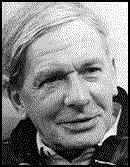
The History of
TIPS/TRIZ
There are two groups of problems people face: those with
generally known solutions
and those with unknown solutions. Those with known
solutions can usually be solved
by information found in books, technical journals, or
with subject matter experts.
Here, the particular problem is elevated to a standard
problem of a similar or analogous
nature. A standard solution is known and from that
standard solution comes a particular
solution to the problem.

Genrich S. Altshuller, the Father of TRIZ
A better approach, relying not on psychology but on
technology was developed by
Genrich S. Altshuller, born in the former Soviet Union in
1926. His first invention, for
scuba diving, was when he was only 14 years old. His
hobby led him to pursue a
career as a mechanical engineer. Serving in the Soviet
Navy as a patent expert in the
1940s, his job was to help inventors apply for patents.
He found, however, that often
he was asked to assist in solving problems as well. His
curiosity about problem solving
led him to search for standard methods. What he found
were the psychological tools
that did not meet the rigors of inventing in the 20th
century. At a minimum, Altshuller
felt a theory of invention should satisfy the following
conditions:
1.Be a systematic, step-by-step procedure 2.Be a guide
through a broad solution
space to direct to the ideal solution 3.Be repeatable and
reliable and not dependent on
psychological tools 4.Be able to access the body of
inventive knowledge 5.Be able
to add to the body of inventive knowledge 6.Be familiar
enough to inventors by following
the general approach to problem solving.
In the next few years, Altshuller screened over 200,000
patents looking for inventive
problems and how they were solved. Of these (over
2,500,000 patents have now been
screened), only 20% had somewhat inventive solutions; the
rest were straight forward
improvements. Altshuller more clearly defined an
inventive problem as one in which the
solution causes another problem to appear, such as
increasing the strength of a metal
plate causing its weight to get heavier. Usually,
inventors must resort to a trade-off and
compromise between the features and thus do not achieve
an ideal solution. In his
study of patents, Altshuller found that many described a
solution that eliminated or
resolved the contradiction and required no trade-off.
Altshuller categorized these patents in a novel way.
Instead of classifying them by industry,
such as automotive, aerospace, etc., he removed the
subject matter to uncover the problem
solving process. He found that often the same problems
had been solved over and over
again using one of only forty fundamental inventive
principles. If only later inventors had
knowledge of the work of earlier ones, solutions could
have been discovered more
quickly and efficiently.
In the 1960s and 1970s, he categorized the solutions into
five levels:
•Level one - Routine design problems solved by
methods well known within the specialty.
No invention needed. About 32% of the solutions fell into
this level.
•Level two - Minor improvements to an existing
system, by methods known within the industry.
Usually with some compromise. About 45% of the solutions
fell into this level.
•Level three - Fundamental improvement to an
existing system, by methods known outside
the industry. Contradictions resolved. About 18% of the
solutions fell into this category.
•Level four - A new generation that uses a new
principle to perform the primary
functions of the system. Solution found more in science
than in technology.
About 4% of the solutions fell into this category.
•Level five - A rare scientific discovery or
pioneering invention of essentially a new system.
About 1% of the solutions fell into this category.
He also noted that with each succeeding level, the source
of the solution required broader
knowledge and more solutions to consider before an ideal
one could be found.
![]()
Stockholm - SWEDEN
Phone +46 8 666 04 19 Fax +46 8 600 19 70
E-mail: TIPS Innovation